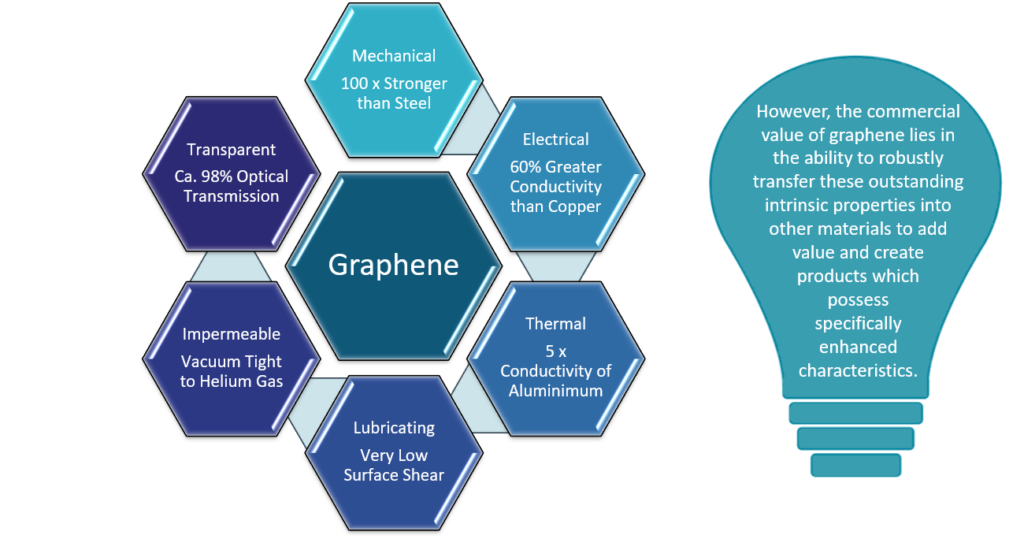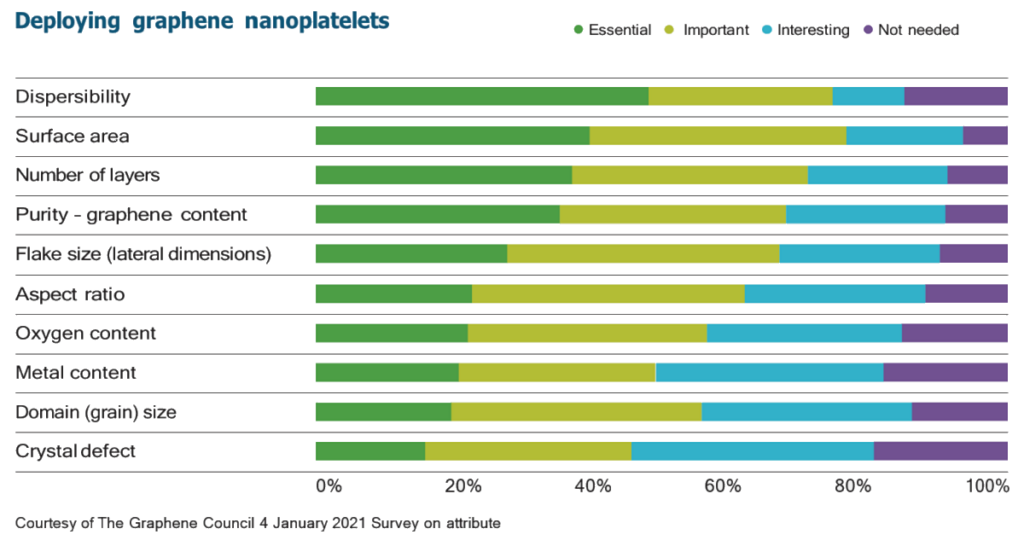What is Graphene?
Graphene was first isolated in 2004 by Andre Geim and Konstantin Novoselov at The University of Manchester. They used sticky tape to remove single layers from the surface of graphite and deposit them onto a silicon wafer. The isolation of graphene was a breakthrough and Geim and Novoselov ultimately won the 2010 Nobel Prize for Physics.
So what is so special about this nanomaterial and why is it unique? Pristine Graphene is a form of carbon and it’s no surprise it’s considered to be a “wonder material“.
Made of planar sheets which are an atom thick and arranged in a honeycomb-shaped lattice, it’s completely transparent and the thinnest and lightest materials known to science. It’s the best possible conductor of electricity, has outstanding thermal conductivity and is 100 times stronger than steel….

So what makes graphene useful?
The perfect combination of properties makes graphene ideal for a range of applications, however, its commercial value lies in the ability to robustly transfer these outstanding intrinsic properties into other materials, thus creating higher value materials and products which possess specifically enhanced characteristics.
According to The Graphene Council, the processing and handling of graphene is integral to achieving success in an application.

This is where Universal Matter excels; its expertise in the supply of graphene dispersions that are safe to handle and easy to incorporate means UM customers are able to benefit from the real potential of graphene in their industrial applications. UM utilises differentiated application technology to create both standardised and end-user specific customised dispersion for a wide range of applications.
Offering the long-term stability of standard dispersion products, alongside a bespoke dispersion development service for specific applications, successful graphene deployment is also enabled through the consistency of quality of UM’s scalable graphene products.
AGMs graphene nanoplatelet dispersions enhance the performance of numerous industrial systems, enable customers to create value adding, innovative new products in market sectors including paints and coatings, batteries and energy storage, polymer composites and lubricants, waxes and polishes.

Read more about what differentiates UM’s graphene from others here.


